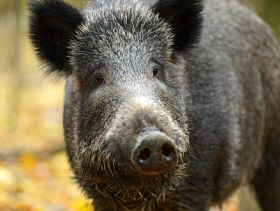 sment of possible methods to control the spread of African Swine Fever in Europe's wild boar population, the European Food Safety Authority (EFSA) finds hunting and artificial feeding unlikely to be effective, while it recommends a feasibility study on fencing.
sment of possible methods to control the spread of African Swine Fever in Europe's wild boar population, the European Food Safety Authority (EFSA) finds hunting and artificial feeding unlikely to be effective, while it recommends a feasibility study on fencing.EFSA prepared its scientific report has been prepared in response to a request for urgent scientific and technical assistance under Art 31 of Regulation (EC) No 178/2002, in relation to possible mitigation measures to prevent introduction and spread of African swine fever virus (ASFV).
Specifically, it was requested to assess the feasibility to drastically reduce the wild boar population by hunting or by the use of traps, and to assess if prevention of movement of wild boars by feeding or by artificial physical barriers reduces the risk of spread of ASFV.
A review of the scientific literature on hunting and trapping of wild boar revealed that hunting and trapping has never achieved a drastic reduction in a wild boar population in Europe. Depopulation efforts can lead to adaptive behaviour of the hunted wild boar, compensatory growth of the population and the influx of wild boar from adjacent areas.
Introduction of ASFV through wild boar is a form of progressive spread of ASFV through the same wild boar meta-population, i.e. through direct or indirect contact transmission of ASFV between wild boar. Considering the above, drastic hunting is not a tool to reduce the risk for introduction and spread of ASFV in wild boar populations.
Furthermore, wild boar density thresholds for introduction, spread and persistence of ASFV in the wild boar populations are impossible to establish. This is due to the uncertainty on the extent of the spread and maintenance of ASFV in wild boar populations, the bias in population datasets and the complex population structures and dynamics. If depopulation attempts were to be undertaken, these can even increase transmission and facilitate progressive geographical spread of ASFV. It is well known that intensive hunting pressure on wild boar population leads to dispersal of groups and individuals.
Artificial feeding of wild boar might rather increase than reduce the risk of ASFV spread. Fencing can restrict wild boar movement but the practical feasibility of implementing (emergency) fencing in North East Europe is not clear at the moment. Better knowledge on the ASF epidemiologic situation and spatial distribution of the wild boars is required to identify the areas where fencing could be used as one element of a control programme and to assess the feasibility of its implementation.
African swine fever is a viral disease that is harmless to humans but deadly to pigs, and wild boar. At the end of January, Poland and Lithuania reported cases of African swine fever in wild boar.





